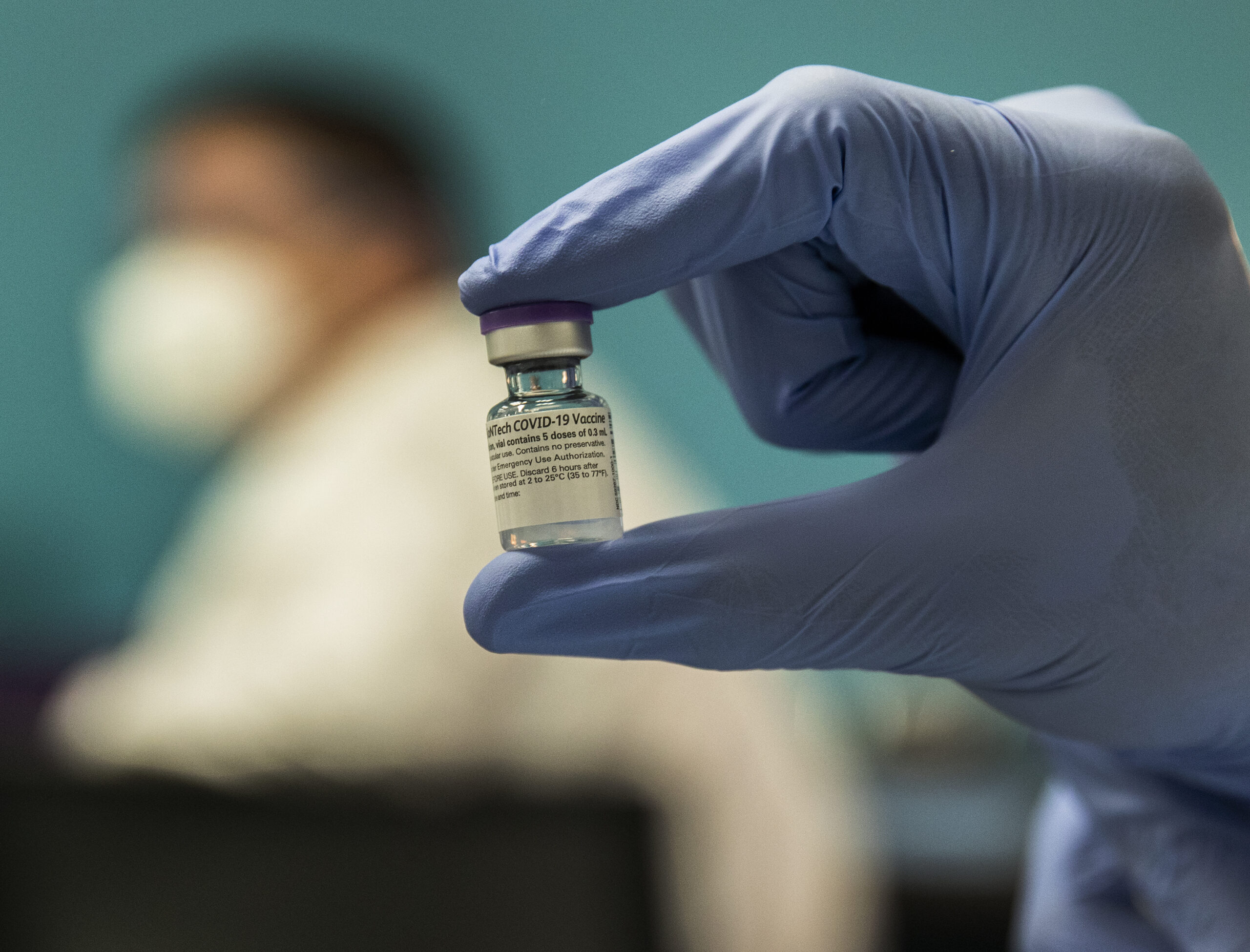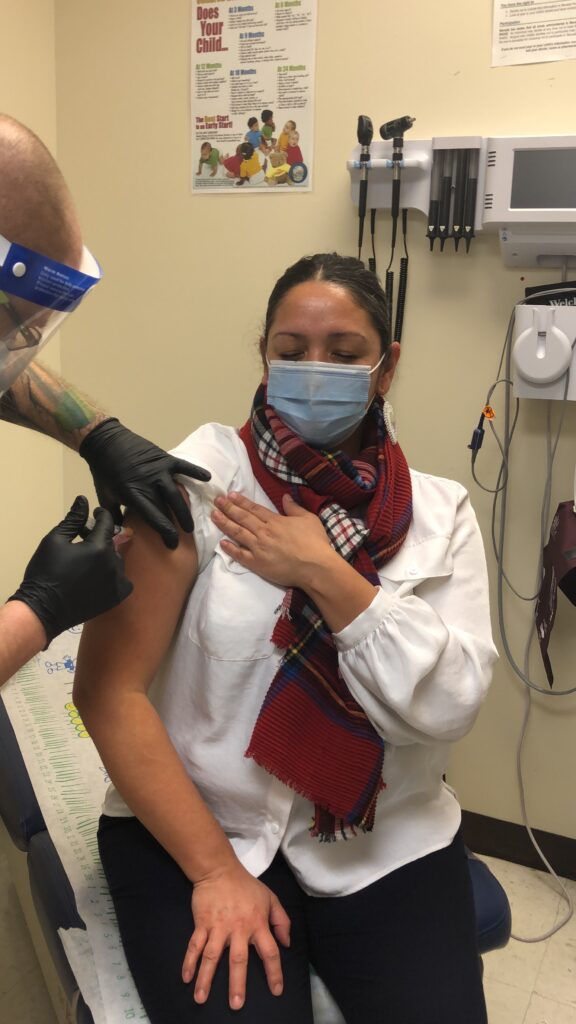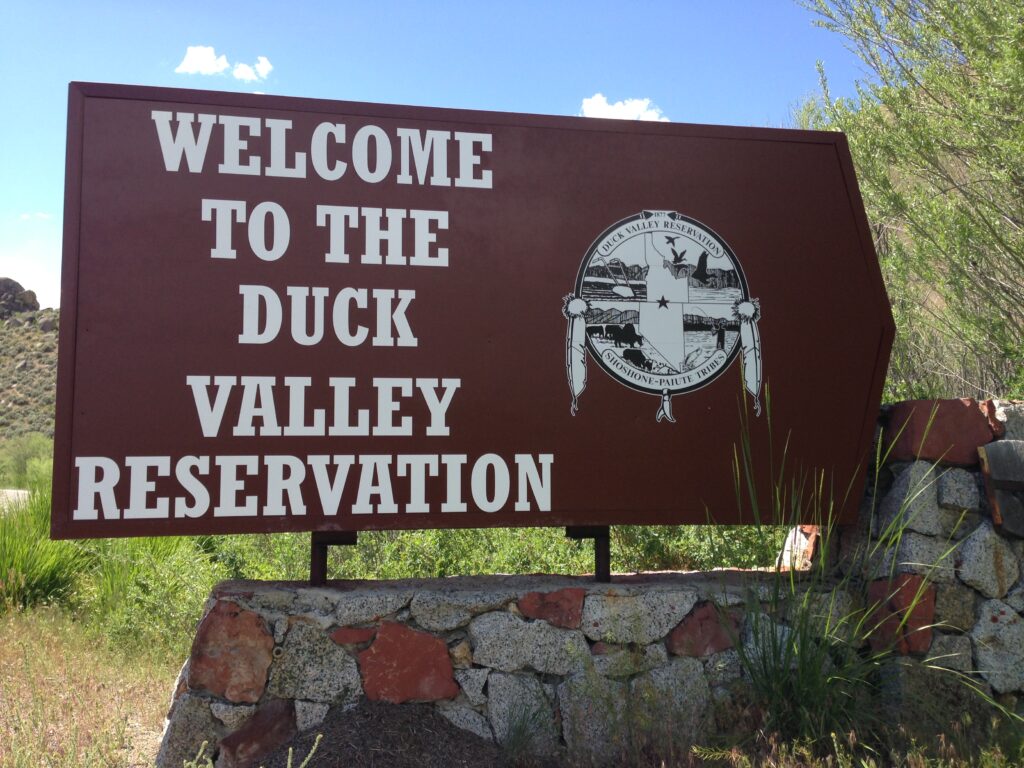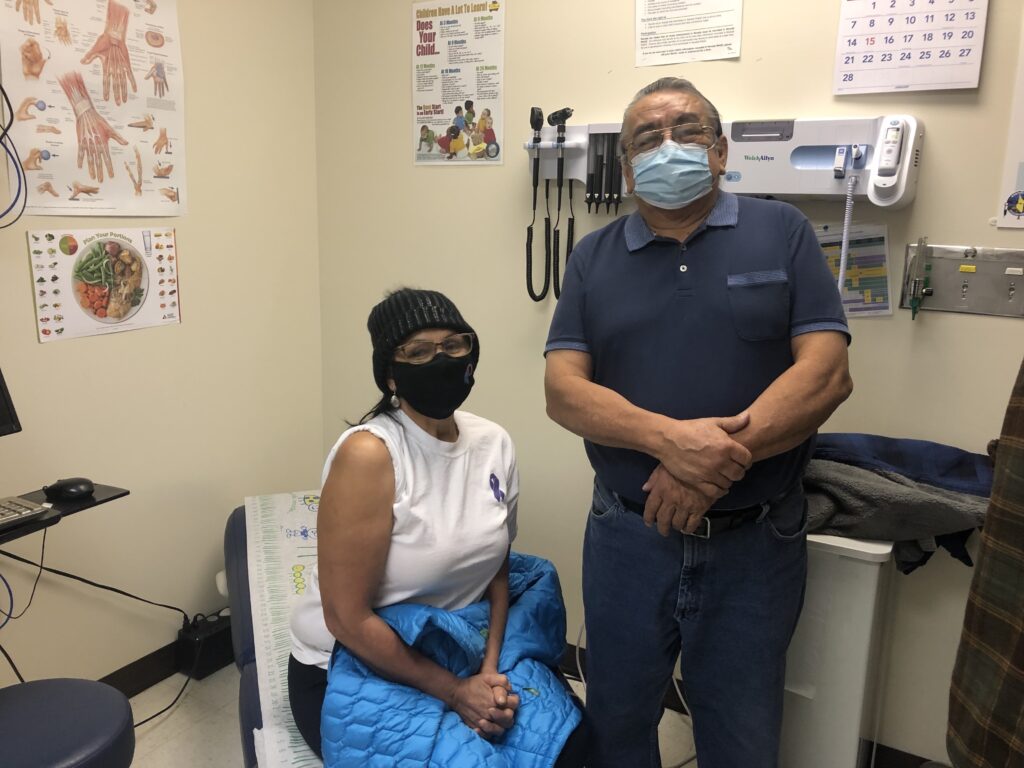Vaccines arrive in Indian Country, but are met with hesitancy from some tribal members

As COVID-19 disproportionately affects Native people across the state and country, Duck Valley Shoshone Paiute tribal member Lynn John knew she needed to act quickly when a mere 100 doses of the Moderna vaccine arrived at the tribal health center.
She likened the small act of receiving the vaccine to the culturally significant buffalo, which stand shoulder to shoulder amid an attack or threat while protecting the youngest and oldest of the herd behind them.
“As a person who's now received a vaccine, I consider myself one of those buffalo standing shoulder to shoulder with other people who have received the vaccine, protecting those who either can't, or choose not to,” John, 44, said during an interview with The Nevada Independent.

A school administrator, John noted the reason she was able to receive the vaccine as early as Jan. 4 was because many other tribal members in the top priority tiers had refused it, making room for essential workers such as herself. She is scheduled to receive the second dose on Feb. 2.
She said she felt leery at first, but found comfort in the evidence supporting the vaccine’s safety and efficacy.
“I chose to get vaccinated, first off, because I believe in the science,” John said.
As of Wednesday, there have been 171 cases of COVID-19 recorded on the Duck Valley reservation, where approximately 1,700 tribal members live, with no deaths or current hospitalizations. The tribe has administered vaccines to 125 people, 10 of which have received the second and final dose.
The tribe declared a state of emergency on Mar. 13 and implemented a stay at home order on Mar. 27 that includes a 10 p.m. to 6 a.m. curfew. The tribe also prohibited social gatherings and closed recreational fishing, camping and hunting areas to non-residents. The order has not since been rescinded.

Statewide, Nevada Indian Commission Executive Director Stacey Montooth said in an email to The Nevada Independent, the agency had tracked 281 active cases and 13 deaths as of Jan. 15 — a record peak of cases for Indian Country in the state. Native people make up 1.7 percent of the state population.
However, she also clarified that data for Native communities is rarely complete, as some tribal nations prefer not to report data and tracking Native people living in urban areas is difficult, so the numbers could be higher.
Across the U.S., COVID-19 has infected the Native population at three and a half times the rate of white people and taken the lives of Native people at nearly double the rate of white people.
Infection and mortality rates are compounded by the population’s disproportionate rates of chronic health conditions, such as diabetes. American Indians and Alaskan Natives are nearly three times more likely to be diagnosed with diabetes than white people and died from the disease at more than twice the rate of white people in 2017.
Indian Country mourns community members
John’s aunt, Velda Lowery, an enrolled member of the Reno-Sparks Indian Colony, was among the first tribal members in Northern Nevada to die from complications with COVID-19 in April. She was 58.
The loss affected John, her family and community members early on in the pandemic, but it didn’t stop with Lowery. Nevada’s 27 tribal nations are interconnected across the vast state, and the death of a tribal member in Yerington is mourned by tribal members as far as Owyhee nearly 400 miles away.
John named Dennis Smart from Fort McDermitt, a language and cultural keeper; Monty Williams from Fallon, a Marine veteran and advocate for substance and alcohol-free living; and Elliott Aguilar from Yerington, a spiritual leader and Indian Child Welfare Act specialist for the Walker River Paiute Tribe. All have died from complications with COVID-19.
“I've known these people,” John said. “I've been taught by them. I've been influenced by them. I know their children, I know their grandchildren. And it hurts. It hurts a lot. And I'm frankly shocked when people tell me they don't know anybody who's gotten sick, or they don't know anybody who's died. Because right now I would probably take up both of my hands to count the number of people who I know personally have lost their lives to coronavirus.”
For Native communities, priority lies in protecting tribal elders in order to preserve their cultures, history and languages.
This is especially significant for tribal members who still remember a time when the U.S. federal government had forbidden their languages, religions and spirituality and traditional ceremonies and dance.
Fortunately, John was able to receive the Moderna vaccine alongside both of her parents. Her mother, 64, is one of the few fluent Paiute speakers in her generation and her father, 66, is a former tribal leader. Both her parents have underlying health conditions.

“It's extremely important because without those individuals to keep our language active, and also to promote the languages they use, we lose so much with every death of an elder… My dad is the former chairman of our tribe. So while he isn't a fluent speaker, what he does have is a tremendous wealth of historical knowledge of our tribe,” she said.
Vaccine rollout
Tribes across the U.S. were given the choice to receive allotments of the Pfizer and Moderna COVID-19 vaccine through the Indian Health Service, the federal agency responsible for providing public health services to tribes, or through tribes’ respective state governments.
As sovereign nations, individual tribal governments determine how they will distribute the vaccine among tribal members. The Duck Valley Shoshone Paiute Tribe and other Nevada tribes are following the Advisory Committee on Immunization Practices guidelines, which prioritize essential health care workers, other essential workers, the elderly and people ages 16 to 64 with underlying health conditions before moving onto the general public.
Tribes across the country received nearly $200 million in the second aid package passed by Congress in December to assist with the vaccine rollout and $800 million for COVID testing and contact tracing.
The pace at which each tribe administers the vaccine varies and depends on vaccine allocations, population size, health care center resources and willingness among tribal members to receive the vaccine.
And while hope to curb the spread of the virus lies within the vials of the Pfizer and Moderna vaccines that have arrived at all tribal health clinics across the state, tribal members, along with members of other communities of color, report being less likely to get the vaccine, which some attribute to long-standing distrust in the government and an outgrowth of historical inequities.
Some tribal members even wonder whether the vaccine may be the government’s attempt to poison their communities, as John has heard from some community members. The Native people of the U.S. and their tribes have been decimated by previous disease outbreaks, such as measles, smallpox and the Spanish flu, spread by white settlers.
John said she’s making efforts to speak up with accurate messaging amid disinformation swirling among community members. She said she’s even convinced a few family members to change their minds about the vaccine.
“We don't have a lot of information,” John said. “And some of my family members don't watch the news, they don't have social media. So any information they receive is through word of mouth. So I do try to be an informant of accurate, scientifically backed information to help my family members make a decision that will be number one, their choice, but to give them information that isn't conspiracy theories, or founded in fear.”
For John, and for Native people everywhere, the gravity to preserve their communities remains.
“I really, really would hope that more Native people would (get vaccinated), I think we need to put aside some of the historical trauma that we sit with. And in this instance, consider that we are an endangered species. We are the descendants of the original people of this land, there aren't many of us. We have to protect ourselves.”
